Recently, the media exposed Force Touch technology in Apple's next-generation mobile phone iPhone6s. In fact, it has been applied on the Apple Watch and MacBook series notebooks, but this version is different from the previous one. Because the MacBook trackpad and Apple Watch can sense two different levels of pressure, that is, tap and press. According to foreign media, the new iPhone's "3D Touch Display" can sense three different levels of pressure, with light taps, presses and stronger presses.
Therefore, the naming of "3D Touch" is likely to come from this.
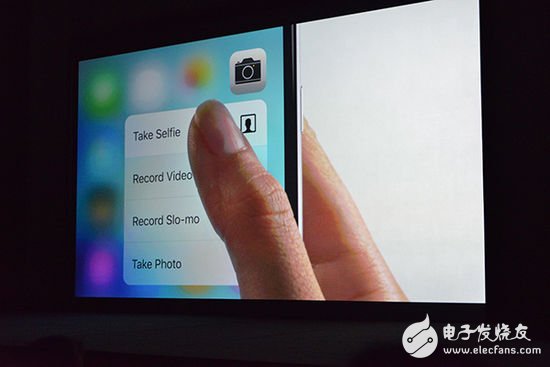
Because of my professionalism, I have been working on the new generation of tactile vibration technology for many years. I feel very excited to see this news and feel that the spring of tactile interaction is coming. With curiosity about "tactile interaction" and the next generation of "human-machine dialogue", I am here to come under the new "black technology" of Apple: Force Touch technology (because Apple does not officially express technology as "3D Touch", here Also known as Force Touch technology, and the broader direction that opens up: tactile interaction.
First, the "tactile interaction" gate opened by Force Touch
Force Touch, the pressure touch, refers to the process of inducing the change of electrical data through the generation and change of the induced pressure, then generating the command through the electrical data, and finally reaching the pressure and indirectly implementing the command.
The research and exploration of stress sense has been for many years. Among them, Z-Orh, Z-origin of the United States, was an early touch explorer. Later, Microsoft and Blackberry successively proposed patents and applications for touch, but for various reasons, their touch gave customers a feeling, and not perfect.
Not long ago, Huawei also released its mobile touch screen mobile phone MATE S in China. The technical solution adopted by it has not been dismantled yet, but its technical scheme is slightly different from Apple because it is thinner than the previous one. But it did not cause heated discussion in the industry, Apple's influence can be imagined.
The pressure touch released by Apple, in terms of Apple's usual style, should be relatively mature and perfect, so it will be released on mobile phones. Therefore, Apple's appeal makes pressure touch open the door to "tactile interaction."
Current mobile phones, for tactile feedback applications, only stay on vibrations and reminders. However, companies such as the US "IMMERSION" company in the vibration and touch industry have laid out a large number of technical reserves and patents based on "tactile interaction", among which software systems and hardware have Chinese technology companies.
For example, TI has previously introduced a driver chip for a new generation of vibration motors based on high voltage; IMMERSION has distributed a number of patents for vibration feedback, and its website also displays a new generation of vibration feedback solutions; China’s new products such as Hengye are also Develop core hardware for "new generation touch feedback".
This time, Apple launched the "Force Touch" technology application, which opened the door for a broader "human-computer touch interaction", allowing users to enter a new era of "tactile interaction".
Second, the technical principle of Force Touch
The principle of pressure touch is actually very easy to understand:
The screen senses finger pressure - through the change in the area of ​​the finger pressure - resulting in different electrical signals - the pressure sensor is processed according to the electrical signal - the mobile phone CPU receives the pressure sensor signal - the mobile phone CPU generates the corresponding command - customer perception Instruction changes caused by stress (such as screen changes, menus)
The following picture shows the process of how the user gets the phone/tablet feedback by pressing it:
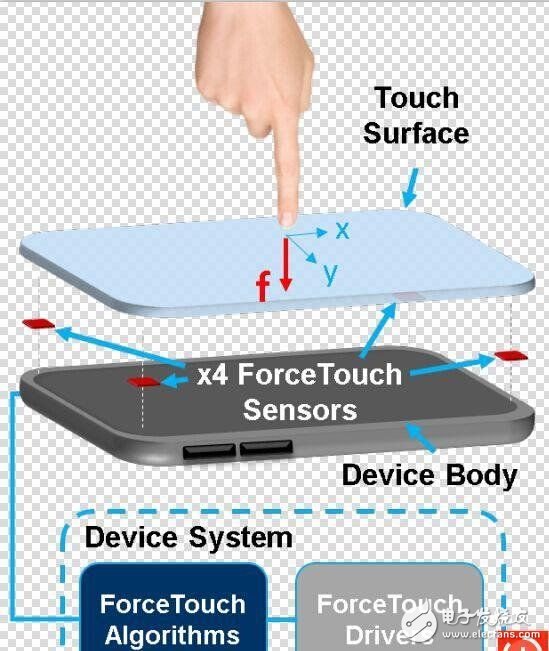
As shown in the above figure, the technical principle of tactile feedback consists of three major parts: the pressure generated by the touch, the identification of the pressure, and the feedback command after the recognition. The most important is the tactile sensor "Force Touch Sensors", which is pressed. An important part of the touch.
The thin and light construction of the mobile phone also puts high demands on the touch sensor and the FPC, which must be very thin and light compared to the tablet and the computer. This time, Apple's mobile phone has increased its thickness because of the thickness of the key components of Force Touch, which is the addition of the Force Touch pressure module. However, it is also said that Apple will reduce this thickness on the next generation of mobile phones, so where will Apple make changes?
Third, the construction of Force Touch
1. Overall touch structure:

According to the current dismantling of iPhone6s, the screen used is still Incell screen, the supplier is Japanese company such as JDI, the touch layer of Incell screen is under COVER GLASS, and the physical components of "Force Touch" are added. Therefore, the construction of the screen must be very delicate.
2. Special changes in the touch layer / material changes
Although it is still an INCELL screen, and its touch layer has introduced the latest revolutionary materials, it is not yet known, but it can be seen from the network: Apple requires its Japanese suppliers to supply nano silver screen, so the industry is optimistic about SILVER NANO Whether WIRE (nano silver) has been applied to a new generation of apples has not been confirmed.
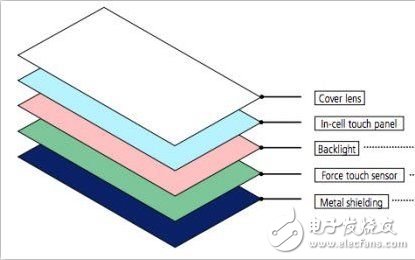
Apple's patent shows that Apple's original touch layer, close to the liquid crystal part, cut the VCOM layer of ITO into parallel lines, which is for the realization of pressure touch.
3, the pressure sensor part
According to the public dismantling of Apple's MAC, there are four pressure sensors on the MAC, which are located in the four sides of the touch, and there is also a "feedback system" composed of magnetic materials.
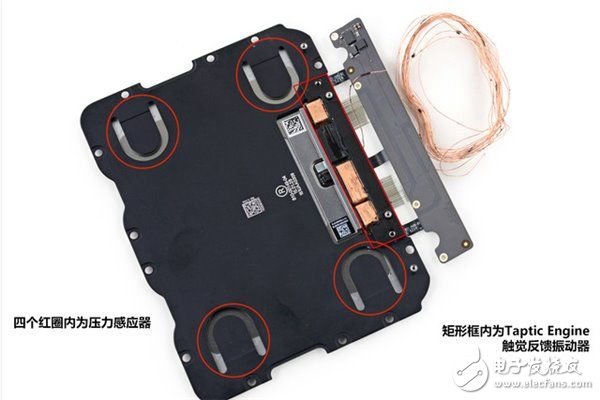
Mac's touchpad disassembly
From the above disassembled Mac touchpad, Force Touch has been applied to Macs. Because of the size and thickness of Mac, it is more suitable for the processing of pressure touch layer. Therefore, the adoption of Apple mobile phone also comes from using on Mac. Process accumulation.
What must be seen is that there is a special “feedback system†on the Mac – a “feedback device†composed of magnetic materials, which is used to give feedback to the user when pressing the sound or vibration to make the user experience more. There is a "reality."
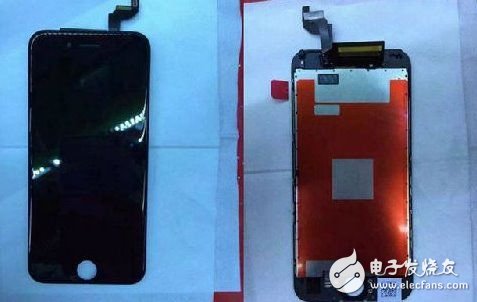
Disassembly of the Apple 6s that flowed out on the Internet: slightly thicker than 6 because of the built-in touch sensor
Since there is no real and complete disassembly of the iPhone 6s, especially for the piece-by-piece disassembly of the pressure-sensitive part, it is a big problem to carefully place the pressure-sensitive part. And according to the increase in the thickness of the mobile phone announced by the media, it should function as a touch control device, but it is still not very thin and light, and has its physical limit.
The next generation of iPhone7, Apple has said it will be thinner, and thinner is from the change of the touch part, or the structure of other devices of Apple itself, it is not known, can only wait for relevant news to be released, we will do further analysis .
Fourth, "tactile interaction" is the future opened by Force Touch
1. The origin and prototype of tactile interaction
Pressure sensing technology is just the beginning of the “tactile feedback systemâ€. The next generation of mobile phones is expected to generate many applications that are exclaimed by consumers in the tactile feedback system. The current Force Touch technology has only changes in command and screen functions, and there is no "physical feedback from mobile phones to customers."
---- This is the "tactile interaction" of the future.

The tactile interaction includes not only feedback from the software system of the mobile phone, but also the “feedback of the hardware system†of the mobile phone. For example, when you touch the screen's "Prickly Pear", if you can feel a thorny feeling, this is a popular interpretation of "tactile interaction." More generally, it is the simulation, the real feeling.
A few years ago, Japan, under the impetus of tactile vibration devices, produced several mobile phones and tablets that responded quickly to vibrations, but at the time these products did not have much to do with pressure touch:
For example, a "RAKURAKU" mobile phone produced by DOCOMO in Japan can provide a sense of touch on the touch screen of the elderly, such as pressing the keyboard, and it has always been popular; Panasonic has also launched a unique vibration feedback tablet; South Korea PANTECH has also introduced flat-panel vibrating plates and so on.
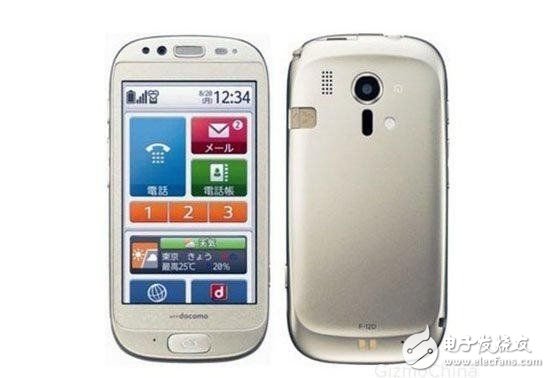
RAKURAKU elderly mobile phone from Fujitsu, Japan
However, because there was no pressure conduction at the time, and then a physical loopback to form a closed loop, these products with tactile vibration devices did not cause heated discussion in the industry, but this is already a "formation of tactile interaction."
2. Key components of tactile interaction: physical feedback devices
The tactile interaction system is inseparable from a key device: the tactile vibration feedback device, which requires feedback speed and accuracy, which is not at all achievable by the existing deflection vibration motor or linear vibration motor. It requires a new vibration feedback device, including magnetic materials, piezoelectric ceramic materials, and piezoelectric ceramic materials combined with MEMS technology is considered to be the best feedback device.
Sadly, piezoelectric MEMS devices are also breaking through. The limitations existed today: the volume is only suitable for PAD, and there is a distance and power consumption problem from the volume requirement of the mobile phone. However, the power consumption brought by the multilayer ceramic is greatly reduced, and it is expected to solve this problem.
There are Japanese technology companies engaged in key hardware research and development, as well as young Chinese returnee technology companies. For example, research friends who are engaged in the research and development of ceramic vibrating materials and devices often say frankly: We firmly believe that this trend has reduced the voltage from 100V to 36V through material and structural technology, and tried it on some large-sized flat plates. However, when applied to mobile phones, there are still many improvements in terms of volume and the like.
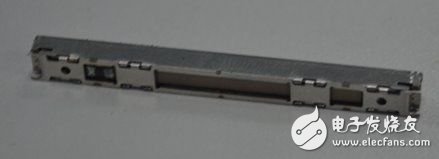
Prototype of "New Generation Ceramic Vibration Device" developed by Chinese enterprise Hengye New Materials
3. The future of "tactile interaction"
Apple's "tactile interaction" has broad future application prospects. It not only allows customers to have a real "human-machine dialogue" experience, but also generates more and larger application markets, such as the application of the Internet of Things. Open a new page of the mobile app.
More importantly, tactile feedback will also bring a series of chain reactions in the industry, which will lead to a revolution in new materials, new processes, and new devices, especially the combination of new materials and MEMS processes, which will be widely used in them. .
In addition to Force Touch, Apple has redefined a touch technology this time, which is the "stylus" that Jobs hated.
In the minds of tablet users, the demand for stylus is always there. After all, the nib on the touch screen is a precise input method than the fingertip. However, the reason why the Apple people have not touched the stylus is probably because of the legacy of Lao Qiao’s life. Jobs once publicly mocked the stylus at the iPad generation conference: "Who would want a whole stylus? It’s not convenient to say it in your pocket. You strolled around with a pen and lost it, so touch The control pens are all dragging the scorpion." (Joe Joe's original words, the Northeast dialect translation)
Perhaps because of the fierce competition in the tablet market and the strong desire of users, Apple has made a compromise product for the flagship professional tablet. Is this the face of Jobs?

Before Apple officially released Apple Pencil, the rumors of the iPad Pro with a stylus were endless, and even a lot of patents about the touch stylus were exposed.
Until this early morning, this Apple Pencil came out in a long-awaited way. Although people had some psychological expectations for the new iPad Pro stylus, they still felt a little surprise for this pen. This pen is completely different from the traditional one. The capacitive stylus is indeed a high-tech product.
According to the presentation, Apple Pencil uses a pure white color scheme, the design is simple and elegant, and the nib is very thin, completely subverting the stupid image of the ordinary capacitive stylus. Apple Pencil is designed for the iPad and works with the iPad. It hides a lot of amazing technology inside compared to the traditional stylus.
Speaking of the stylus, you have to mention the principle of a capacitive stylus. To put it simply, when the device is working, it will give a very low voltage to the capacitive screen working surface. When the user touches the screen, the finger or the stylus will suck a small current, which is from the touch screen. The electrodes on the four corners or the four sides flow out, and the ratio of the four currents is precisely calculated by the controller to obtain the position of the touch point.
The traditional stylus principle is that the metal material is used on the pen holder, and a pen tip made of conductive silicone, conductive cotton or conductive fiber is installed on the tip of the pen, so that a power-on bridge can be established between the finger and the screen, thereby controlling screen. The drawback of this traditional stylus is the lack of sensitivity and precision.
According to the conference, Apple Pencil can be used in conjunction with the iPad Pro screen. The system can determine whether the user is using a finger or Apple Pencil. When it senses Apple Pencil, the auxiliary system scans the display 240 times per second, and the collected data. The point is equivalent to twice the size of the finger, and the response is very fast and efficient.
Apple Pencil has built-in pressure sensor and tilt angle sensor to simulate the real situation when people use the pen, such as the pressure, position, and the angle between the iPad and the iPad. According to the inclination and pressure of the pen tip, the MulTI-Touch display The screen can detect the corresponding position of each sensor, thus drawing lines with different thickness. For example, when the user writes with Apple Pencil, if the pressing force is large, the pressure sensor will get feedback and then “line†Adjustment of the writing state such as "bold".

Based on Apple Pencil's sensor and iPad Pro's screen support, Apple Pencil can achieve very high sensitivity, no delay in writing on the screen, and Apple Pencil has no effect compared to traditional capacitive stylus. The high precision of imagination can be as precise as one pixel of writing.
Since Apple Pencil integrates many technologies, unlike traditional styluses, Apple Pencil necessarily requires power support. At the end of the Apple Pencil, open the pen cover, you will find a Lightening interface, you can directly plug into the iOS device to charge, I feel that charging is not convenient? Don't worry, Apple Pencil supports 15 seconds of fast charge, one fast charge can support 30 minutes of use, and fully charged time is up to 12 hours, enough for users to use everyday.
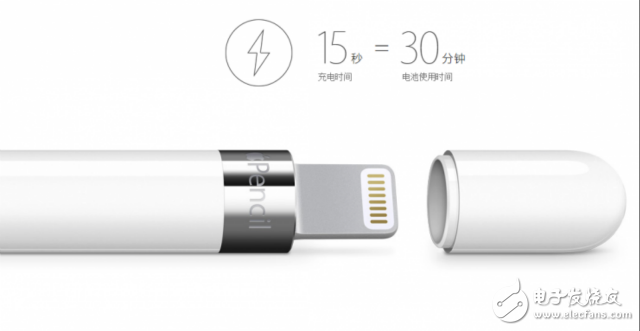
Apple is not the first manufacturer to use a high-precision technology to make styluses. The previous 53 Paper Pencil Bluetooth stylus also integrates a lot of technology, but compared to Apple Pencil, 53 Pencil looks too Clumsy.
Although it is a compromise product, but it has not dealt with, still achieve the ultimate in the pen, this Apple Pencil is still a very qualified product for professional users, although the price of 99 dollars is somewhat expensive, but with 53 Pencil is also a big gap, after all, this is a professional tool.
However, Apple Pencil also has a fatal flaw, that is, Apple does not provide space for this exquisite stylus. 53 Pencil can at least use the magnetic bar on the side of the iPad, and Apple Pencil does not have a reasonable placement. It seems that Joe’s worries are correct: lost and can be adjusted?
Brighten up your life with this Led Neon Signs. This piece gives the attention-getting look of the traditional neon sign with more durability and less energy consumption using the latest LED Technology. Whether it is shining bright or serving as a sculptural statement, this decorative neon lights will always give a room something to say. The LED neon signs are easy to hang with the perfectly placed holes and clear acrylic structure, you`ll have this edgy and practical piece up on your wall in no time.
Led Neon Signs,Led Decorative Neon Lights,Neon Window Signs,Decorative Neon Rope Lights
Shenzhen Oleda Technology Co.,Ltd , https://www.baiyangsign.com